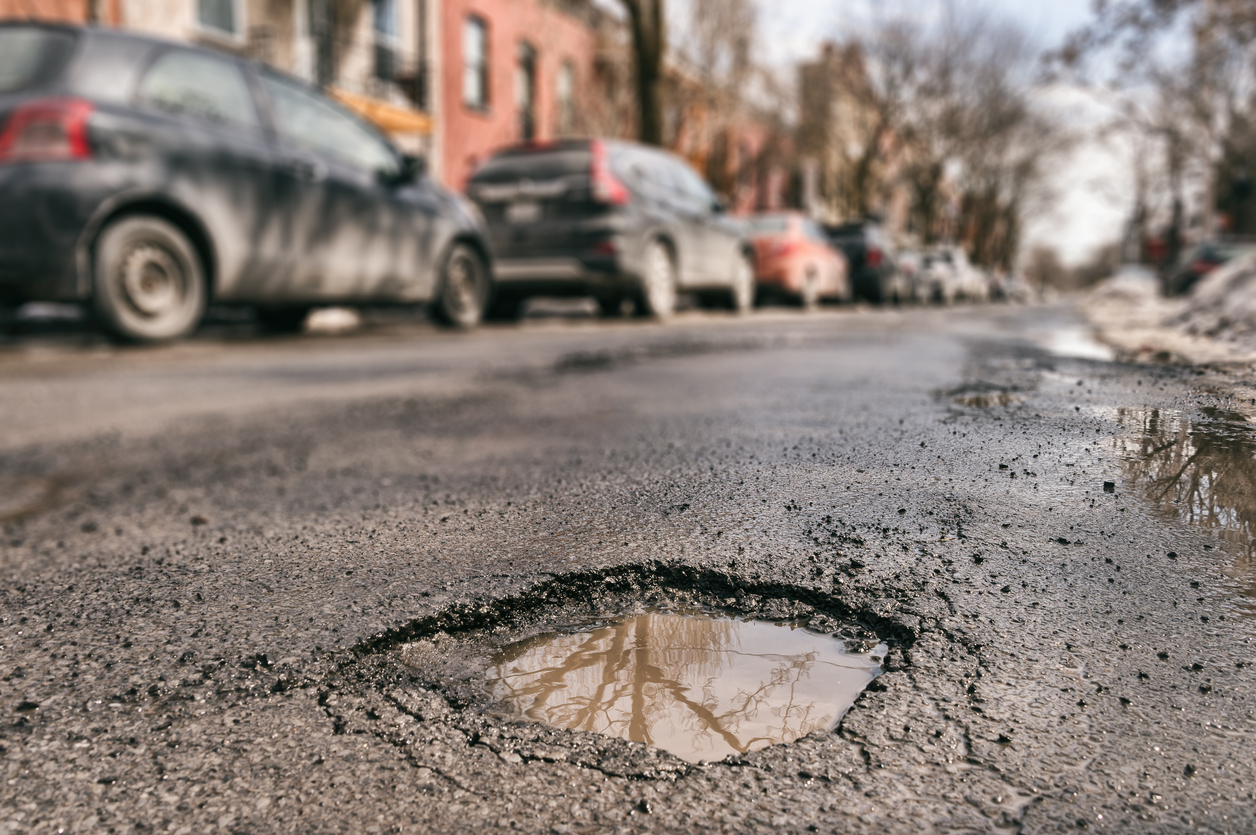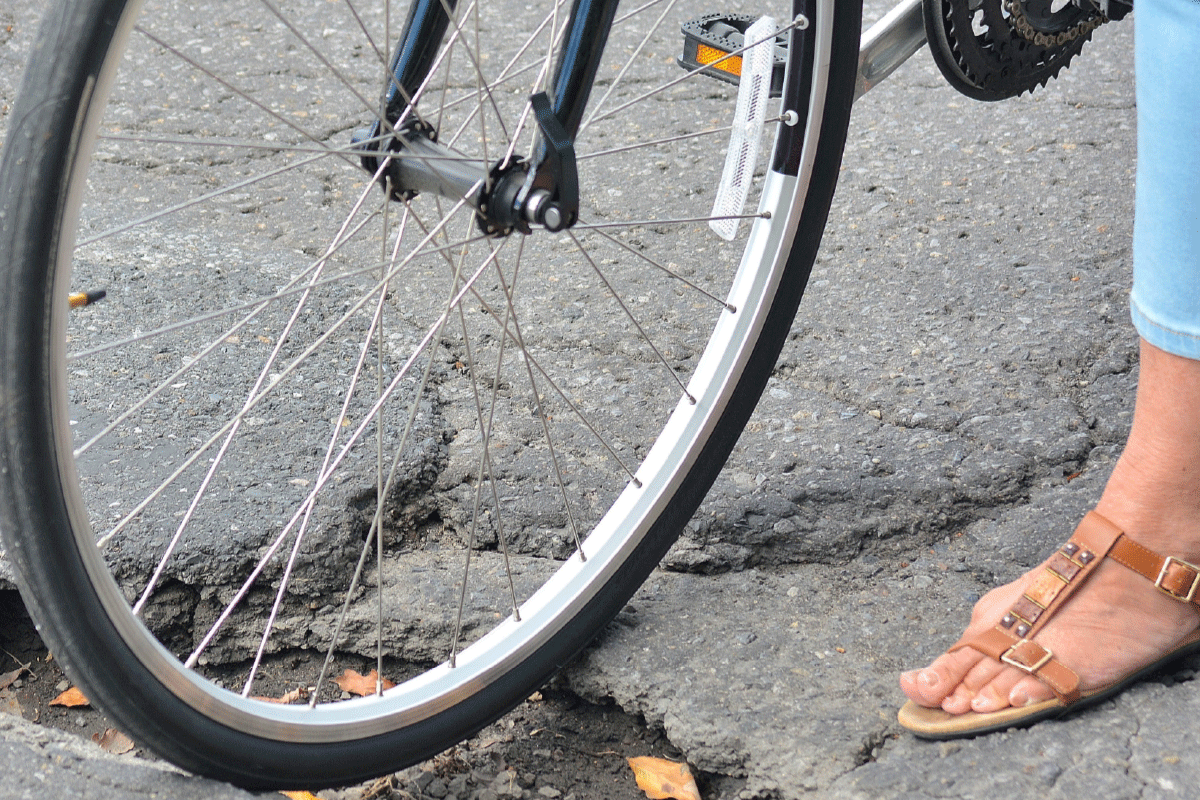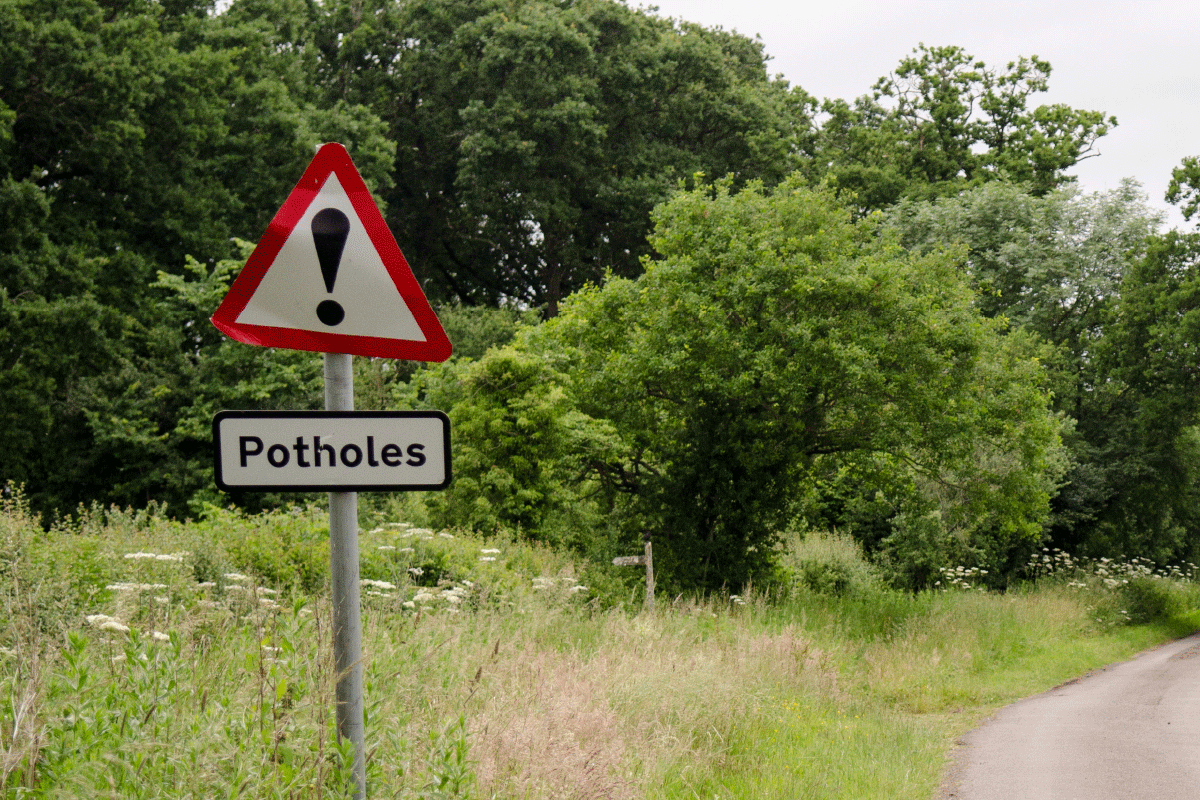Potholes and dodgy pavements - how to claim compensation
Potholes and uneven pavements cause billions of pounds worth of damage every year and lead to hundreds o…
24th January 2020 14:36
by Chris Menon from interactive investor
Potholes and uneven pavements cause billions of pounds worth of damage every year and lead to hundreds of injuries. But what are your rights if you are injured or your car or bike is damaged?

Cash-strapped councils have failed to maintain roads and pavements, which has led to increased accidents involving motorists, cyclists and pedestrians.
The poor maintenance of roads is a longstanding problem and, in July 2019, the House of Commons transport select committee condemned it as a “national scandal”.
Potholes have affected an estimated 11 million drivers across the UK, costing a staggering total of £1.2 billion in reported damages, according to research published by car servicing firm Kwik Fit.
The most common repairs are to tyres, suspension, wheels, steering, bodywork and exhausts, with the average cost to a motorist calculated as £109 a year, according to the Kwik Fit survey.
Damage is not always immediately noticeable, so it is advisable to give your car a check if you do hit a pothole hard. If at all concerned, you should take your car to your local garage for an inspection.
Cyclists are particularly vulnerable to injuries from potholes. As many as 23 cyclists were killed and 394 seriously injured due to poor or defective road surfacing while out cycling between 2010 and 2018, according to campaign group Cycling UK. Many more cyclists will sustain minor injuries or suffer damage to their bikes.
Definitive numbers do not exist for pedestrians injured after tripping over dodgy pavements. However, local councils reported they had seen 10,200 claims for trips and slips in 2018, a Freedom of Information request by the AA revealed. Given that not all councils responded, the actual number is likely to have been much higher.
The Conservative Party promised in its election manifesto to earmark £2 billion for fixing potholes, so hopefully in time there will be some improvement to our roads.
Chance of compensation
It is possible to claim compensation, but it is not easy. For example, the amount paid out in road-user compensation schemes by local councils in 2018 was only £6.9 million, according to the most recent Annual Local Authority Road Maintenance survey by the Asphalt Industry Alliance.
Furthermore, research from Cycling UK about the amount of compensation paid out to cyclists and motorists, between financial years 2013 to 2018, discovered that, while the average compensation payout per motorist was around £340, councils paid on average £8,800 per cyclist for incidents involving potholes.
Sadly, this is undoubtedly due to the physical injuries a cyclist may suffer in an accident.
Pedestrians were awarded in total at least £2.1 million in compensation after tripping on pavements in the year to August 2018, the AA found.
How to claim compensation

Michael Hardacre, head of occupiers and public liability at personal injury lawyers Slater and Gordon, has obtained compensation for many victims of potholes and pavement trips from numerous local councils.
He explains: “To make a successful claim, you need to be able to establish negligence. You have to prove that the responsible party failed in their statutory duty to take reasonable steps to keep any lawful user of the highway reasonably safe,” he adds.
Hardacre stresses: “The key interpretation is what are reasonable expectations? What we say all the time to clients is that if the responsible party can show a reasonable system of inspection of the highway and regular maintenance of that highway, they generally have a good defence to a claim.”
Most major roads in the UK are managed by Highways England, Transport Scotland, the Welsh Government or DfI Roads in Northern Ireland. Smaller, local roads and pavements are usually the responsibility of the county, city or borough councils.
Hardacre is careful to only take on cases that he thinks he stands a chance of winning, which he says is only between 10% and 20% of the enquiries he receives. Of these, Hardacre says he wins the majority.
Pedestrian wins £7,000 from local council
In May 2017, Caroline*, aged 39, was in Rossendale, Lancashire, walking her dog with her young children when she caught her left foot on the edge of a pothole while crossing the road. Her left knee gave way and she fell to the ground. She damaged her ligaments and had to use crutches and subsequently needed physiotherapy.
She went to Mulderrigs Solicitors, which represented her on a ‘no win, no fee’ basis against Lancashire County Council.
Although councils usually fight such cases, when it saw the photographs the council quickly admitted liability for the accident. Aided by a report from a medical expert in support of her claims she won her claim for £7,000 in October 2018.
*Name changed
Gather your evidence

You need physical evidence that what caused the accident was an actionable defect – that it was something that should already have been repaired. A photograph can show the extent of the defect if taken correctly. For example, if the accident was caused by a raised paving stone you need a ruler up against it or a 50p piece to give perspective. The stone should be at least an inch above or below the regular height as a rule of thumb. A pothole usually needs to be a minimum of 40mm deep to be what a council would consider actionable.
You need to prove that the road or pavement wasn’t reasonably maintained. But be prepared for the council to deny liability, stating it regularly inspects the road and the defect was not there the last time it checked. It is also likely to point out that, given limited resources, it cannot immediately fill every pothole or repair every defective pavement. So the onus is on the complainant to prove the defect existed longer than claimed, perhaps by contacting local residents or businesses.
If you sustain injuries, make sure you record them and that you get a certificate for any time that you need off work. If you can, it is also useful to obtain witnesses to the accident.
It is important to remember that any claim must be made within three years of the accident.
Having an experienced lawyer could increase your chances of successfully gaining compensation or at least avoid your wasting time and effort in pursuing a claim that you are unlikely to win.
That said, Paul Mulderrig, managing director at personal injury solicitor Mulderrigs, suggests that motorists claiming only for damage to their car where there has been no injury, are best off using a small claims court to avoid legal fees.
“A claim where there has been no injury, worth less that £15,000, will be treated by the courts as a small claim. This means that no one can recover their legal expenses, so it is probably not worth the lawyer’s time or the claimant’s time to engage a lawyer, as they will end up paying their own legal fees,” he says.
Many personal injury lawyers operate on a ‘no win, no fee’ basis, so you should not have to bear the costs of litigation if you lose the case – but always check before instructing them. Still, you will have to pay a share of your damages to them if you win. It will vary but it generally should not be more than 25%.
According to solicitor Nicola Hall, who specialises in cycling accident claims at Osbornes Law, the duration of a personal injury claim depends on several factors. These include the extent of the injuries and whether the defendant admits liability.
“If liability is disputed, then court proceedings may have to be issued, which means that a settlement might conclude at a later date. If an individual has sustained soft tissue injuries, then a case may take between six to 18 months. For individuals who have sustained fractures or head injuries, cases will take between 12 months to four years.”
Cyclist claims £18,000 in pothole accident
In May 2017, James*, then 44, was cycling from his home in North London to Hatfield in Hertfordshire, going down a single lane, country road in Hatfield at about 22 mph to 25 mph. He noticed that the road surface was not flat and there were multiple potholes that he tried to avoid. He safely steered his bike around the first two, but the third had a width of 60cm, length of 120cm and depth of 5cm with loose gravel. James moved to the right to avoid the pothole, but was thrown from his bicycle after a lorry driver began to overtake him.
James sustained injuries including a fracture to the left nasal bone, a fractured cheekbone and collarbone. The driver fled the scene of the accident and the claim was pursued against the Motor Insurers Bureau (which helps the victims of uninsured or untraceable drivers). It was successfully argued that the driver ought to have known that motorcyclists and cyclists may suddenly need to avoid uneven surfaces and obstacles, such as drain covers or potholes on the road and ought to have given sufficient space on the road when driving close to the cyclist.
James’s solicitor, Nicola Hall at Osbornes Law, claimed against the driver because it was easier than claiming against a council.
James incurred special damages including travel expenses, dental work, osteopathy and physiotherapy sessions as well as damage to the bicycle. After 14 months, the claim was settled for £18,000.
*Name changed
This article was originally published in our sister magazine Moneywise, which ceased publication in August 2020.
These articles are provided for information purposes only. Occasionally, an opinion about whether to buy or sell a specific investment may be provided by third parties. The content is not intended to be a personal recommendation to buy or sell any financial instrument or product, or to adopt any investment strategy as it is not provided based on an assessment of your investing knowledge and experience, your financial situation or your investment objectives. The value of your investments, and the income derived from them, may go down as well as up. You may not get back all the money that you invest. The investments referred to in this article may not be suitable for all investors, and if in doubt, an investor should seek advice from a qualified investment adviser.
Full performance can be found on the company or index summary page on the interactive investor website. Simply click on the company's or index name highlighted in the article.